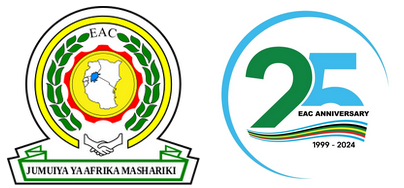Rational for Regionalisation of Capital Markets
The capital markets of the East African Community, even when combined, remain small by comparison with other African markets.
The key objective in regionalisation of EAC capital markets is to make them more attractive both to issuers and to investors and, as a result, to expand those markets. The creation of a single EAC capital market would offer domestic investors greater choice and domestic issuers greater potential to raise larger amounts of capital from a wider range of investors, enabling the economy and employment to expand.
The development of a single efficient and reliable EAC capital market infrastructure is also expected to not only improve capacity to complete transactions for issuers and investors; but also offer improved reliability and economies of scale and thus greater cost-efficiency.
The combination of a wider and deeper market and improved transaction efficiency and reliability should also result in the ability to attract a higher level of foreign portfolio investment than has previously been the case.
There is no shortage of demand from institutions or individuals, either domestic or international, who wish to invest in East Africa. As an illustration of this, at the end of 2007, it is estimated the total funds under management by insurance and pension funds in the three original EAC Partner States was US$ 15.7 billion compared with the estimated total market value of the float1 of securities in all three markets, including government bonds, of less than US$ 10 billion.
This excludes the value of both unit trusts and other investment funds, which are developing in all three original Partner States2, and of investments by private individuals or investment clubs3. The inflows to both public and private pension funds from contributions made by members and their employers are swelling this value regularly. Clearly the value of these institutional portfolios is not all available for investment in capital markets, but there is certainly both capacity and desire to increase this.
Domestic Demand
Added to domestic demand, there is an awakening foreign interest in sub-Saharan Africa as a destination for investment. While this may be temporarily reduced owing to the recent climate of uncertainty in world markets generally, it will, revive when conditions become more settled.
Therefore,the greatest constraints on further development of market depth and breadth, which would be enhanced by the integration of EAC markets, lies in the availability of investments, both bonds and equities. A key objective of integration, therefore, must be to encourage more issuance of securities of all types by enhancing the ability of issuers in all Partner States to access the deeper pool of capital available in the EAC market as an integrated whole. It is noteworthy that when markets’ size and liquidity increases, the incidence of new IPOs also increases.
This would be particularly valuable to issuers in the smaller markets, notably the new members in whose countries capital markets are in their infancy. The combined market capitalisation of the three original EAC Partner States would place an integrated EAC market 4th in size in sub-Saharan Africa, ranking after only South Africa, Zimbabwe and Mauritius as opposed to 7th (Kenya), 14th (Tanzania) and 16th (Uganda) if the markets remain separate.
The EAC has set out a strategy and plan to achieve an EAC capital markets regime which permits capital to flow and participates to operate freely across EAC borders and which becomes increasingly attractive to foreign as well as regional investors.
The result of the proposed regionalisation process would be that:
- Market intermediaries should be able to offer their services and deliver them in each of the EAC countries;
- EAC investors should be able to invest in any security throughout the EAC through a single point of access;
- EAC issuers should be able to seek investors in any part of the EAC ; and
- Transfer of funds and securities across EAC borders would be quick, easy, secure and cost effective
__________________________________
1 Float describes the value of securities available to be traded in the secondary market, and excludes holdings of controlling shareholders and governments.
2 Neither Rwanda nor Burundi have initiated collective investment schemes yet
3 The latter are popular in Uganda and Kenya and are being encouraged by government and the banks
